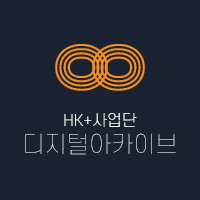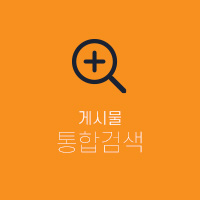
역사와 문화를 한눈에 볼수있는 공간
원천자료의 보존과 접근, 이용자 편의를 위한
디지털 인프라를 구축하겠습니다.
[연구논문] 조선시대 공작새 및 그 장식의 유입과 소비
-
작성자관리자
작성일2025-02-27 17:05:23
조회수490
조선시대 공작새 및 그 장식의 유입과 소비
◎ 저자명: 윤승희(HK연구교수)
◎ 학술지: 한국문화연구 47
◎ 발행처: 이화여자대학교 한국문화연구원
◎ 간행일: 2024.12.31.
공작은 조선에 서식하지 않았던 진기한 동물이었다. 공작은 대개 일본을 통해 유입되었는데, 조정에서는 공작이 진헌될 때마다 나라에 서식하지 않는 진기한 동물은 기르지 않아야 한다고 간언하였다. 이는 즐거움을 위해 무익함을 취하지 말라는 서경의 가르침이었다. 공작은 뽐내기를 좋아하는 누군가에겐 귀한 선물이겠으나, 조선의 왕에게는 가까이해선 안 되는 완물이었다. 조선에 서식하지 않는 ‘실물’ 공작을 경계했던 모습과 달리, 공작의 이미지를 활용한 ‘문양’은 조선에서 매우 적극적으로 이용되었다. 조선에서는 왕실의 의장용 부채에 공작이 그려져 용과 봉황에 다음가는 계급적 의미를 가진 문양으로 사용되었다. 특히 조선 전기 관료 체제에서 원칙적으로 단 다섯 명만이 사용할 수 있었던 공작흉배는 최고위의 서열을 보여주는 문양이었다. 명으로부터 수용한 흉배제도의 목적 자체가 등급의 차별을 두어 존비를 분별하는 데에 있었고, 조선에서는 그 목적과 함께 도식화된 일정한 양식까지도 준용하여 공작흉배를 사용하였다. 그러나 조선에서 수용했던 명 예제의 기준이 완화되고, 제도 전반에 조선만의 특징이 생기기 시작한 양난 이후 공작흉배는 점차 사라졌다. 명 조정의 1품 문관의 흉배였던 선학 문양이 보편화되기 시작한 것이다. 명 예제의 완화는 극소수의 특정 신분만이 사용하였던 공작의 문양이 조선 후기 오히려 공작우(孔雀羽)라는 장식의 형태로 널리 퍼지는 계기가 되었다. 국왕을 비롯하여 문무 관원은 융복 차림으로서 공작우를 좌우에 꽂아 장식한 우립을 착용하였고, 무관의 군복 차림인 전립에는 하나의 공작우가 정자에 매달린 형태로 장식되었다. 명에 종속되었던 관복제도가 변화하며 특정 신분에게만 제한되어 있었던 공작의 이미지는 조선 후기 자유롭게 활용될 수 있었다. 그리고 그 흐름은 공작의 이미지 그 자체인 수컷의 꽁지깃을 장식으로 사용하는 방향으로 진행되었다. 높은 신분이 향유하였던 문화라는 상징만 남은 공작우는 여령에 이르기까지 폭넓게 소비되었다. 도식화되었던 공작흉배의 문양은 자유로운 깃털 장식의 형태로, 특수층의 계급을 드러내며 사용되었던 공작의 이미지는 다양한 계층이 모조품으로써 그 상징성만을 누리는 변화였다.
The peacock was an exotic creature that did not naturally inhabit Joseon and was mostly introduced through Japan. Whenever a peacock was offered to the royal court, ministers advised that rare animals not native to the kingdom should not be kept, adhering to the teachings of the Book of Documents(書經), which discouraged pursuing the useless merely for amusement. Though a prized gift to those captivated by its grandeur, the peacock was considered a useless and potentially corrupting object and unworthy of closeness to the Joseon king. While real peacocks were discouraged, images of the bird were enthusiastically incorporated into Joseon decorative art. The peacock symbol held esteemed rank, appearing on royal fans and signifying a status just below the dragon and phoenix. Specifically, the peacock square marked the highest levels of official hierarchy and, in early Joseon, was reserved for only five officials. Derived from the Ming tradition, the Mandarin square established visual distinctions in rank, and Joseon adopted both the symbolic purpose and its standardized Ming-inspired design. However, after the invasions of the late 16th century, as Ming influences loosened and Joseon developed its own systems, the peacock hyeongbae gradually disappeared, giving way to more common motifs, including the use of the peacock pattern by Ming’s first-rank civil officials. The relaxation of Ming’s official traditions also led to the widespread use of the peacock feathers, which, in the late Joseon period, became a popular adornment for hats worn by the king and government officials. Military officials wore a single gongjaku feather hanging from their hat in a distinctive style. As the once-restricted imagery of the peacock became more accessible, its use expanded beyond the elite, manifesting as vibrant plumage used widely in adornment. By then, the peacock’s prestigious symbolism, once limited to the upper class, spread broadly—even entertainers like gisaeng incorporated peacock feathers into their attire. The once rigidly defined emblem evolved into a freeform decorative motif, allowing individuals across various social ranks to enjoy the symbolic prestige of the peacock, albeit often in imitation.







